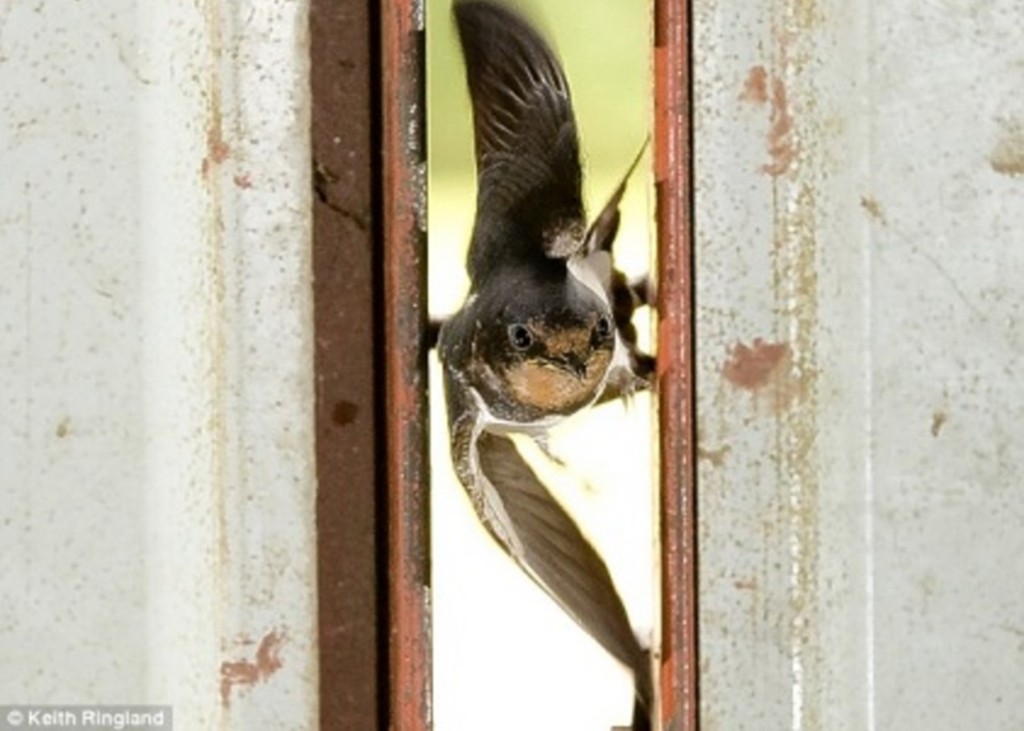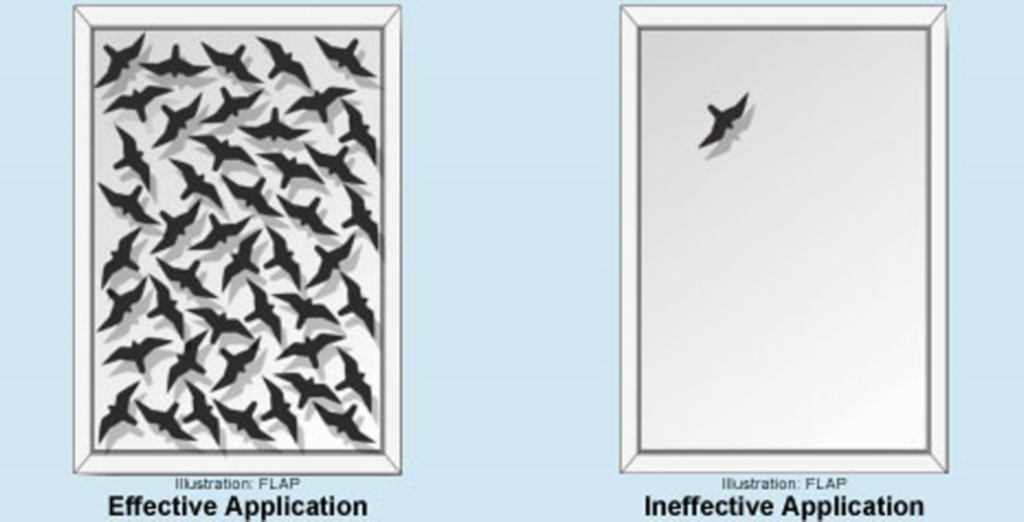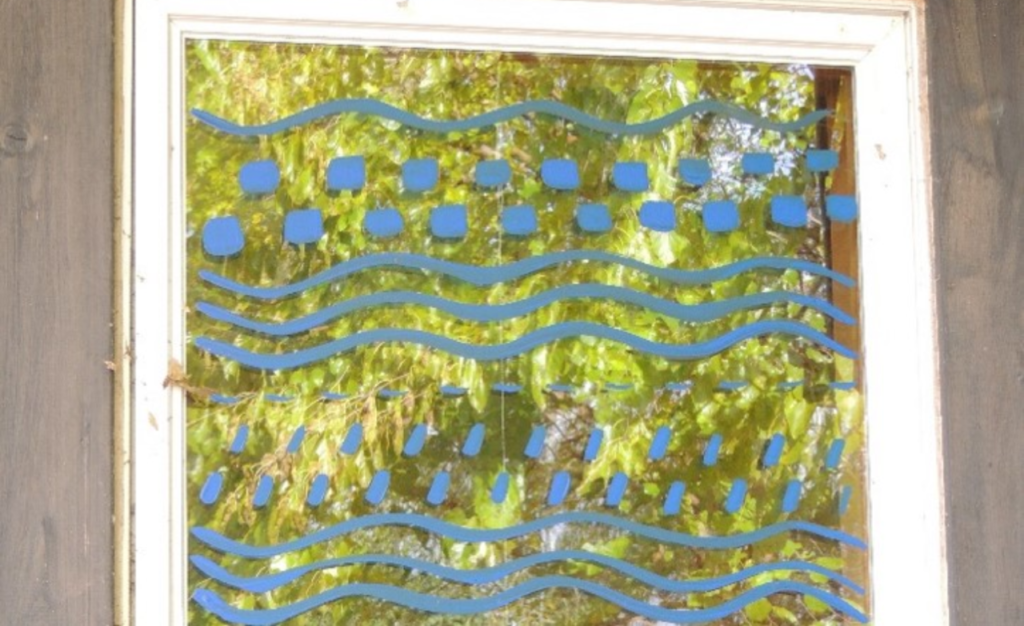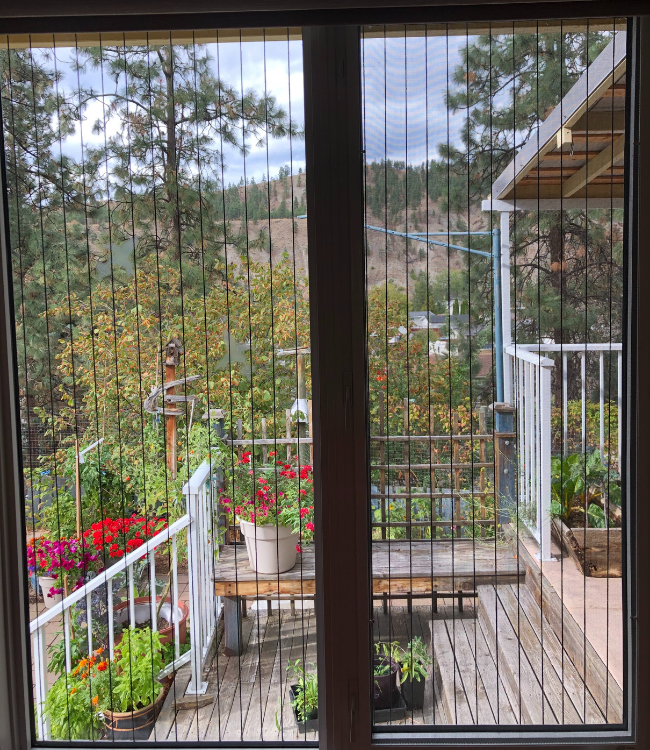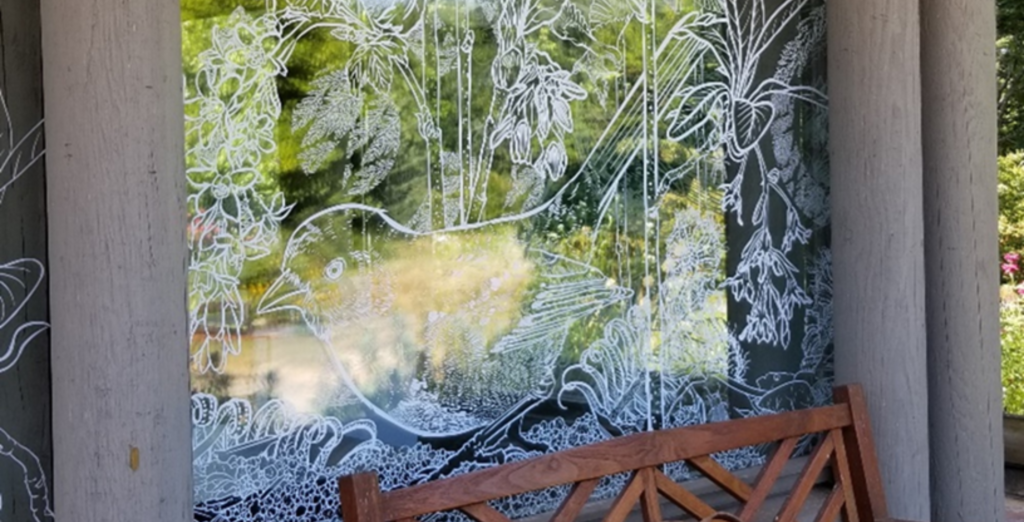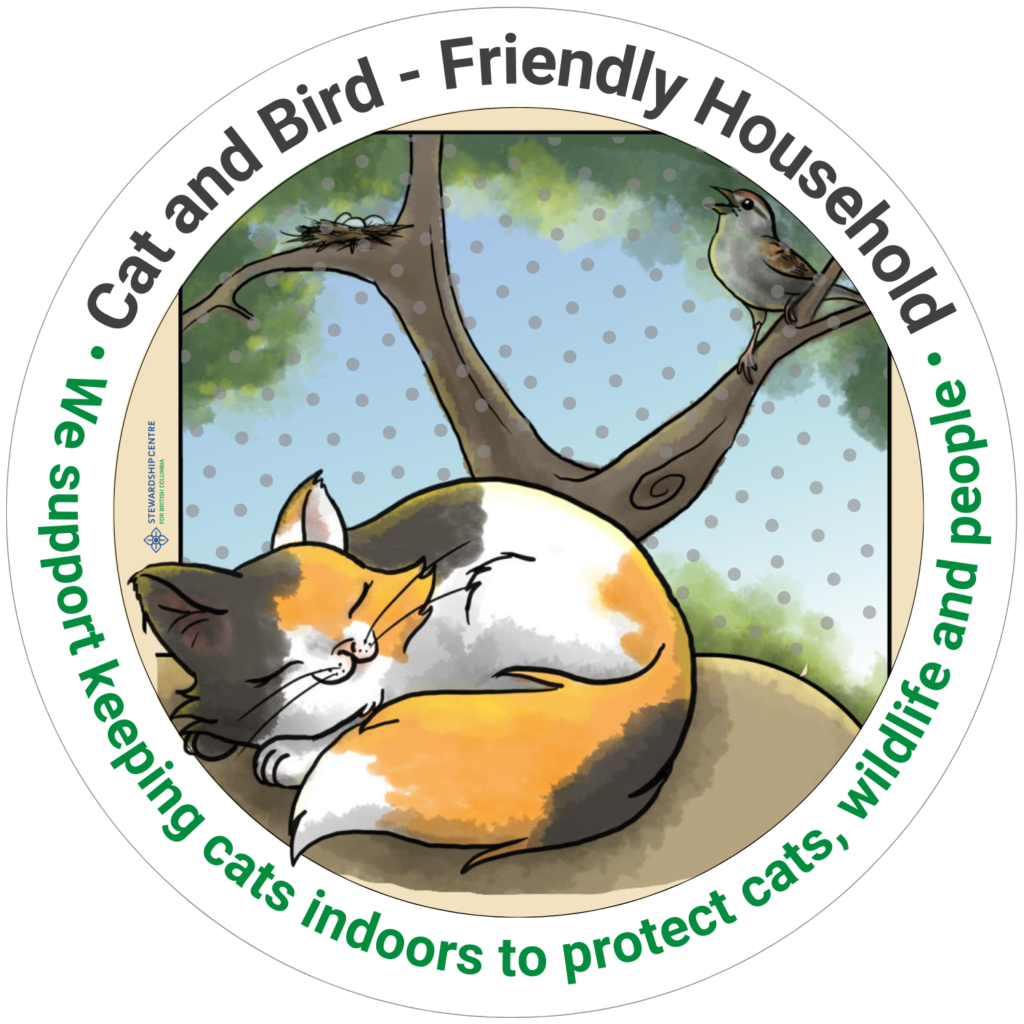Cats and Birds | Helping Birds
Do’s and Don’ts of Bird - Window Stickers
Collisions with windows are a major source of wild bird mortality, affecting over a billion birds in North America and killing between 16-42 million birds in Canada each year alone (Klem, 2015; Loss et al. 2014; Machtans, Wedeles, and Bayne, 2013). Luckily, individual action and awareness can make a difference for millions of local and visiting bird populations!
After cat predation on birds, bird-glass collision are the 2nd highest source of human-related bird mortality. Did you know that 90% of all Canadian window collisions occur at homes, rather than at urban skyscrapers or high rises (Machtans, Wedeles, and Bayne, 2013)? More birds die from window strikes in rural areas and homes with birdfeeders and an abundance of vegetation, attracting more birds to fly nearby houses. You can read more about why birds hit windows here: “Five causes of bird-window collisions.”
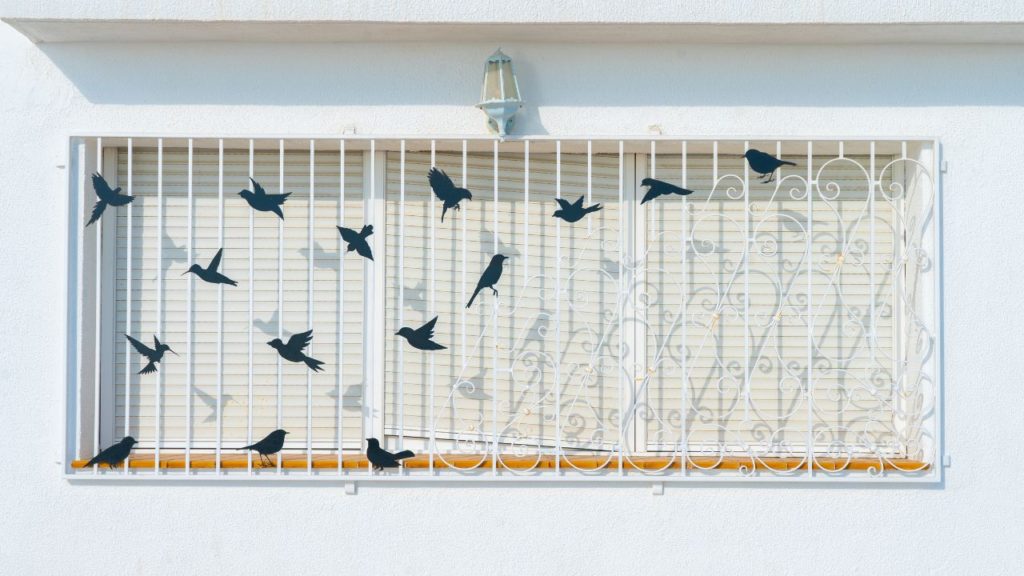
Treat your windows to protect birds from glass collisions. Photo: Guillem de Balanzo
Below you will find the best tips (and mistakes to avoid) when making your home or office windows bird-friendly.
Do's:
- To be effective, glass markers should be spaced 5 cm by 5 cm apart (about the width of two loonies) (FLAP Canada, 2022).
Some birds are adapted to fitting through tight spaces. Photo: Keith Ringland.
- Markers should be placed on the outside of window surfaces (FLAP Canada, 2022).
- A 2022 BC-based study found Feather Friendly treatments to reduce collision risk by 95% at one building (De Groot, et. al., 2022).
Effective window treatment examples. Source: FLAP Canada.
There are plenty of do-it-yourself options available to treat your home windows and other glass surfaces. Choose the right one for your desired longevity and price range.
- Tempera or poster paint is available at most craft stores and can be painted onto windows, lasting up to 5 years, although may come off with snow or rain. It can also be safely washed off. Acrylic or paint pens are similar options.
DIY window treatment using tempera paint. Note the design appears to roughly follow the 5 cm by 5 cm rule. Source: American Bird Conservancy.
- Acopian Bird Savers are rows of vertically hanging of weather-enduring string or paracord attached to the outside of a window. You can buy them or make your own.
DIY Acopian bird savers. Photo: Tanya Luszcz.
- Window screens can be installed on the outside area of windows to limit reflections while reducing the collision impact of a bird who may still hit the window (American Bird Conservancy, 2022).
- Some glass surfaces are more lethal to birds than others, depending on surrounding vegetation, and the placement and reflectivity of glass.
- Prioritize these glass surfaces for treatment and consider alternatives to glass railings when building or replacing these structures.
- Assess individual windows with Birdsafe® DIY Building Risk Assessment App
Window decal art created by Derek Tan, installed to reduce window collisions at the UBC Botanical Garden. Photo: Krista De Groot.
Sometimes you can’t apply window treatments right away. In the meantime, there are some steps you can take right now to somewhat reduce collisions.
- Pull curtains or blinds over windows when you are not home or at dawn when birds are most active.
- Let the outside of your window get dirty and less reflective.
- Consider bird-friendly design for new home constructions.
- If you’ve found a bird that was injured or died from flying into glass, you can report it on the Global Bird Collision Mapper App. Submit your report here.
Don'ts:
- Gaps larger than 5 cm by 5 cm will NOT effectively deter window collisions, since most birds will fly through gaps MORE than 5 cm wide
- Placing only one or two decals on a window is ineffective!
*photo of decal spacing examples* Effective window treatment examples. Source: FLAP Canada
- Any window treatment must be placed on the outside of the glass surface to be effective.
- Reflections of sky and vegetation on the glass will reduce the visibility of treatments placed inside windows, making them ineffective.
Conlcusion
There needs to be more consideration for our feathered friends when it comes to our choice and placement of glass surfaces, and you can help! There are a variety of effective ways you can reduce collisions depending on your preferences and price range.
Further reading and resources:
- American Bird Conservancy: Database of Products That Prevent Collisions
- FLAP Canda: Stop Birds From Hitting Windows
- BCSPCA: A bird flew into my window, how can I help?
- The Stewardship Centre for BC: Collisions with windows is a serious threat to birds
- VARC Canada: Window Strikes are a Major Issue
- BirdSafe Window practices, including for tenants and property owners
To learn more about ways you can help birds, visit Stewardship Centre for BC’s Cats and Birds – Helping Birds page.
References
American Bird Conservancy. (2021). Products & Solutions Database – Insect Screen, external. Glass Collisions Products & Solutions Database. Retrieved August 24, 2022, from https://abcbirds.org/glass-collisions/products-database/
De Groot, K. L., Wilson, A. G., McKibbin, R., Hudson, S. A., Dohms, K. M., Norris, A. R., Huang, A. C., Whitehorne, I. B. J., Fort, K. T., Roy, C., Bourque, J., & Wilson, S. (2022). Bird protection treatments reduce bird-window collision risk at low-rise buildings within a pacific coastal protected area. PeerJ (San Francisco, CA), 10, e13142-e13142. https://doi.org/10.7717/peerj.13142
Fatal Light Awareness Program (FLAP) Canada. (2022). Bird-Safe Window Marker Guidelines. FLAP Canada. Retrieved August 2, 2022, from https://flap.org/stop-birds-frohttps://flap.org/stop-birds-from-hitting-windows/#guidelinesm-hitting-windows/#guidelines
Klem, D. (2015). Bird–Window collisions: A Critical animal welfare and conservation issue.
Journal of Applied Animal Welfare Science, 18(sup1).
https://doi.org/10.1080/10888705.2015.1075832
Loss, S. R., Will, T., Loss, S. S., & Marra, P. P. (2014). Bird–building collisions in the united states: Estimates of annual mortality and species vulnerability. The Condor (Los Angeles, Calif.), 116(1), 8-23. https://doi.org/10.1650/CONDOR-13-090.1
Machtans, C. S., Wedeles, C. H. R., & Bayne, E. M. (2013). A first estimate for canada of the number of birds killed by colliding with building windows. Avian Conservation and Ecology, 8(2), np-np. https://doi.org/10.5751/ACE-00568-080206

